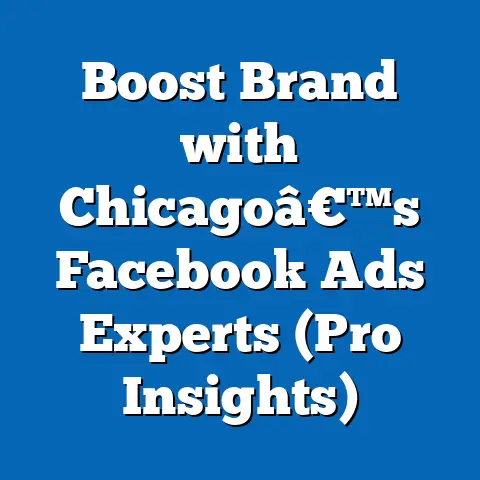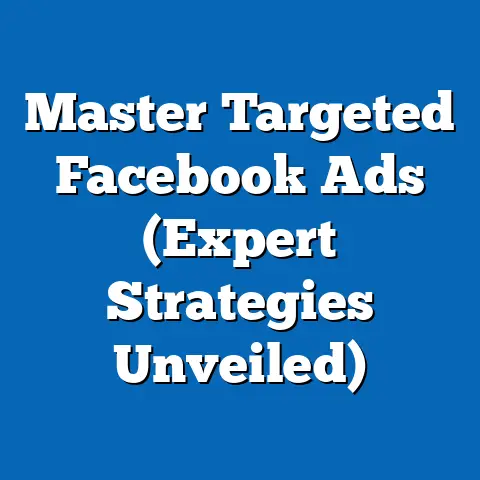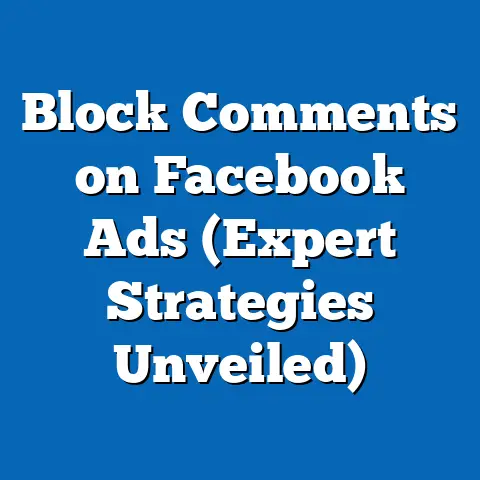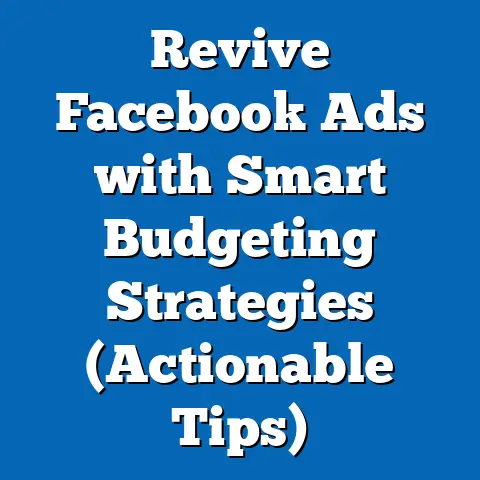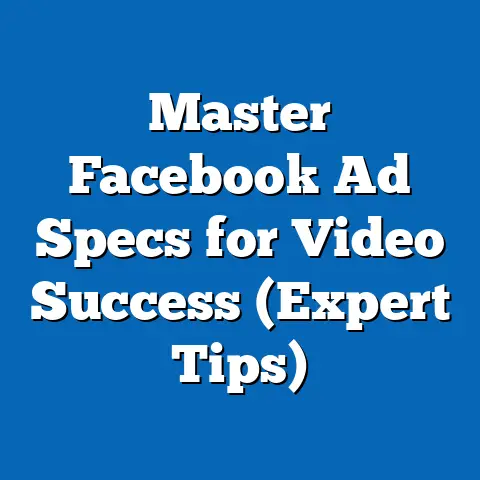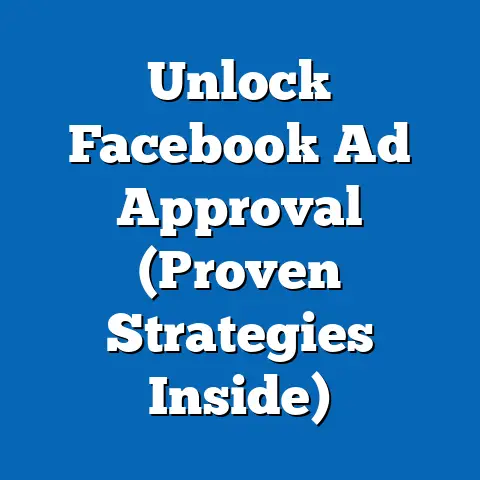Understanding fb ad Set vs. Campaign (Decoding the Nuances)
Imagine stepping into a fully automated smart home. The lights adjust to your mood, the thermostat anticipates your comfort, and the security system stands guard, all working in harmony. Each device, from the smart speaker to the robotic vacuum, has a specific function, but it’s the seamless integration that truly elevates the experience. Now, think of your Facebook advertising efforts in the same way. Just like those interconnected smart devices, your ads, campaigns, and ad sets need to be strategically aligned to achieve optimal results.
I’ve spent years navigating the sometimes-confusing world of Facebook Ads, and I can tell you firsthand that understanding the relationship between ad sets and campaigns is crucial for success. It’s not enough to just throw money at ads and hope for the best. You need a clear strategy, a well-defined structure, and a deep understanding of how each component works together.
In this guide, I’ll break down the Facebook advertising hierarchy, explaining the purpose of campaigns, the flexibility of ad sets, and the key differences between the two. I’ll share my own experiences, offer practical tips, and help you decode the nuances of Facebook advertising so you can create more effective and profitable campaigns. Whether you’re a seasoned marketer or just starting out, this article will provide you with the knowledge and insights you need to master Facebook advertising.
Overview of Facebook Advertising Structure
Facebook advertising operates on a hierarchical structure, a framework that organizes your ads into a logical and manageable system. This structure consists of three main levels: Campaigns, Ad Sets, and Ads. Think of it as a pyramid, with the campaign forming the broad base, the ad sets creating the middle layers, and the individual ads sitting at the top.
-
Campaign: This is the highest level, representing your overall advertising objective. Are you looking to increase brand awareness, generate leads, or drive conversions? Your campaign objective dictates the type of ads you’ll run and the metrics you’ll focus on.
-
Ad Set: This is the middle tier, where you define the specifics of your target audience, budget, schedule, and ad placements. It’s where you fine-tune your campaign to reach the right people at the right time with the right message.
-
Ads: These are the individual creative elements that users see, such as images, videos, and text. They are the face of your campaign, designed to capture attention and drive action.
Campaign: This is the highest level, representing your overall advertising objective. Are you looking to increase brand awareness, generate leads, or drive conversions? Your campaign objective dictates the type of ads you’ll run and the metrics you’ll focus on.
Ad Set: This is the middle tier, where you define the specifics of your target audience, budget, schedule, and ad placements. It’s where you fine-tune your campaign to reach the right people at the right time with the right message.
Ads: These are the individual creative elements that users see, such as images, videos, and text. They are the face of your campaign, designed to capture attention and drive action.
Understanding this structure is paramount for effective ad management. It allows you to organize your advertising efforts logically, track performance accurately, and optimize your campaigns for maximum ROI. Without a solid understanding of this hierarchy, you risk running disjointed ads that fail to resonate with your target audience.
Takeaway: The Facebook advertising structure is a hierarchical system consisting of campaigns, ad sets, and ads. Understanding this structure is essential for effective ad management and campaign optimization.
Delving into Campaigns
A Facebook campaign is the foundation of your advertising strategy, the overarching container that holds all your ad sets and individual ads. Its primary purpose is to align your advertising efforts with specific marketing objectives.
Campaign Objectives:
Facebook offers a range of campaign objectives, each designed to achieve a specific goal. These objectives fall into three main categories:
-
Awareness: These objectives focus on increasing brand visibility and reaching a wider audience. Examples include:
- Brand Awareness: Show your ads to people who are most likely to remember them.
- Reach: Show your ads to the maximum number of people within your target audience.
-
Consideration: These objectives aim to engage your audience and encourage them to learn more about your business. Examples include:
- Traffic: Drive traffic to your website, app, or Facebook Page.
- Engagement: Get more likes, shares, comments, and event responses.
- App Installs: Encourage people to download and install your app.
- Video Views: Increase the number of views on your video content.
- Lead Generation: Collect leads from potential customers through Facebook’s lead ads.
- Messages: Encourage people to contact your business through Messenger.
-
Conversion: These objectives are designed to drive specific actions, such as purchases, sign-ups, or form submissions. Examples include:
- Conversions: Drive valuable actions on your website, app, or in Messenger.
- Catalog Sales: Promote products from your e-commerce catalog.
- Store Traffic: Drive foot traffic to your physical stores.
Awareness: These objectives focus on increasing brand visibility and reaching a wider audience. Examples include:
- Brand Awareness: Show your ads to people who are most likely to remember them.
- Reach: Show your ads to the maximum number of people within your target audience.
Consideration: These objectives aim to engage your audience and encourage them to learn more about your business. Examples include:
- Traffic: Drive traffic to your website, app, or Facebook Page.
- Engagement: Get more likes, shares, comments, and event responses.
- App Installs: Encourage people to download and install your app.
- Video Views: Increase the number of views on your video content.
- Lead Generation: Collect leads from potential customers through Facebook’s lead ads.
- Messages: Encourage people to contact your business through Messenger.
Conversion: These objectives are designed to drive specific actions, such as purchases, sign-ups, or form submissions. Examples include:
- Conversions: Drive valuable actions on your website, app, or in Messenger.
- Catalog Sales: Promote products from your e-commerce catalog.
- Store Traffic: Drive foot traffic to your physical stores.
Choosing the Right Campaign Objective:
Selecting the right campaign objective is crucial for success. It determines how Facebook optimizes your ads and which metrics it prioritizes. To choose the right objective, consider your business goals and target audience.
-
Example 1: E-commerce Business
An e-commerce business launching a new product might start with a “Brand Awareness” campaign to generate buzz and then transition to a “Conversions” campaign to drive sales.
-
Example 2: Local Restaurant
A local restaurant might use a “Traffic” campaign to drive traffic to its website and a “Store Traffic” campaign to encourage people to visit its physical location.
-
Example 3: B2B Software Company
A B2B software company might use a “Lead Generation” campaign to collect leads and a “Conversions” campaign to encourage free trial sign-ups.
Example 1: E-commerce Business
An e-commerce business launching a new product might start with a “Brand Awareness” campaign to generate buzz and then transition to a “Conversions” campaign to drive sales.
Example 2: Local Restaurant
A local restaurant might use a “Traffic” campaign to drive traffic to its website and a “Store Traffic” campaign to encourage people to visit its physical location.
Example 3: B2B Software Company
A B2B software company might use a “Lead Generation” campaign to collect leads and a “Conversions” campaign to encourage free trial sign-ups.
I once worked with a small online clothing boutique that was struggling to drive sales. They were running a campaign with the “Traffic” objective, hoping to get more people to their website. However, after analyzing their data, I realized that most of the traffic wasn’t converting into sales. We switched to a “Conversions” campaign, optimizing for purchases, and saw a significant increase in their ROI. This experience taught me the importance of aligning your campaign objective with your ultimate business goals.
Takeaway: A Facebook campaign is the foundation of your advertising strategy, designed to align your efforts with specific marketing objectives. Choose the right campaign objective based on your business goals and target audience.
Understanding Ad Sets
Ad sets are the workhorses of your Facebook advertising strategy. They sit within campaigns and allow you to fine-tune your targeting, budget, schedule, and ad placements. Think of them as the control panels that allow you to customize your campaign for different segments of your audience.
Customization Options:
Ad sets offer a wide range of customization options, including:
- Audience Targeting: Define your ideal customer based on demographics, interests, behaviors, and custom audiences.
- Budget: Set a daily or lifetime budget for your ad set.
- Schedule: Choose when your ads will run (e.g., specific days of the week, times of day).
- Placements: Select where your ads will appear (e.g., Facebook News Feed, Instagram Feed, Audience Network).
Audience Segmentation:
Audience segmentation is a critical aspect of ad set creation. It allows you to divide your target audience into smaller, more specific groups based on shared characteristics. This enables you to tailor your ads to resonate with each segment, increasing their effectiveness.
-
Demographics: Target people based on age, gender, education, location, and other demographic factors.
-
Interests: Target people based on their interests, hobbies, and passions.
-
Behaviors: Target people based on their online behavior, such as purchase history, website visits, and app usage.
-
Custom Audiences: Target people who have already interacted with your business, such as website visitors, email subscribers, and customers.
Demographics: Target people based on age, gender, education, location, and other demographic factors.
Interests: Target people based on their interests, hobbies, and passions.
Behaviors: Target people based on their online behavior, such as purchase history, website visits, and app usage.
Custom Audiences: Target people who have already interacted with your business, such as website visitors, email subscribers, and customers.
I remember working on a campaign for a travel agency that wanted to promote a special offer on Caribbean cruises. Initially, they were targeting a broad audience of people interested in travel. However, after segmenting their audience into smaller groups based on age, income, and travel preferences, we saw a significant improvement in their results. We created separate ad sets for families, couples, and solo travelers, tailoring the ads to appeal to each group’s specific needs and interests. This experience highlighted the power of audience segmentation in driving ad performance.
Budget Flexibility and Ad Placement Strategies:
Ad sets also provide budget flexibility, allowing you to allocate your advertising budget across different segments of your audience. You can set a daily or lifetime budget for each ad set, depending on your needs.
Ad placement strategies are also determined at the ad set level. You can choose to run your ads on Facebook, Instagram, Audience Network, or a combination of platforms. It’s important to test different placements to see which ones perform best for your target audience.
Takeaway: Ad sets are the control panels of your Facebook advertising strategy, allowing you to fine-tune your targeting, budget, schedule, and ad placements. Audience segmentation is a critical aspect of ad set creation, enabling you to tailor your ads to resonate with different segments of your audience.
Key Differences Between Campaigns and Ad Sets
While both campaigns and ad sets are essential components of Facebook advertising, they serve distinct purposes and operate at different levels. Understanding their key differences is crucial for creating effective and efficient campaigns.
-
Campaigns are overarching and goal-oriented, defining the overall objective of your advertising efforts. They determine the type of ads you’ll run and the metrics you’ll focus on.
-
Ad sets are tactical and execution-focused, allowing you to fine-tune your targeting, budget, schedule, and ad placements. They are the mechanisms by which you implement your campaign strategy.
Campaigns are overarching and goal-oriented, defining the overall objective of your advertising efforts. They determine the type of ads you’ll run and the metrics you’ll focus on.
Ad sets are tactical and execution-focused, allowing you to fine-tune your targeting, budget, schedule, and ad placements. They are the mechanisms by which you implement your campaign strategy.
Think of campaigns as the blueprint for your advertising strategy and ad sets as the individual tools you use to build it. The campaign sets the overall direction, while the ad sets allow you to customize the details.
Flexibility and Control:
Ad sets offer greater flexibility and control than campaigns. You can create multiple ad sets within a single campaign, each targeting a different segment of your audience with a unique budget, schedule, and ad placements. This allows you to test different strategies and optimize your campaign for maximum ROI.
Campaigns, on the other hand, are more rigid. Once you’ve chosen a campaign objective, it’s difficult to change it without starting a new campaign. This is why it’s so important to choose the right campaign objective from the outset.
Visualizing the Relationship:
Imagine a tree. The campaign is the trunk, providing the overall structure and support. The ad sets are the branches, reaching out in different directions to target different audiences. The individual ads are the leaves, capturing sunlight and converting it into energy.
Takeaway: Campaigns are overarching and goal-oriented, while ad sets are tactical and execution-focused. Ad sets offer greater flexibility and control than campaigns, allowing you to test different strategies and optimize your campaign for maximum ROI.
Real-World Implications and Best Practices
Understanding the nuances between ad sets and campaigns can significantly improve your advertising strategies and drive better results. By leveraging the flexibility of ad sets and aligning them with your overall campaign objectives, you can create more targeted and effective campaigns.
A/B Testing:
One of the most powerful applications of ad sets is A/B testing. You can create multiple ad sets within a single campaign, each with a different targeting strategy, budget, or ad creative. By comparing the performance of these ad sets, you can identify the most effective approaches and optimize your campaign accordingly.
For example, you could create two ad sets targeting different age groups or with different ad placements. By tracking the performance of each ad set, you can determine which age group is more responsive and which ad placement delivers the best ROI.
Analyzing Campaign Performance:
Analyzing campaign performance metrics is crucial for informing future ad set adjustments and campaign optimizations. By tracking metrics such as reach, engagement, website traffic, and conversions, you can gain valuable insights into the effectiveness of your campaigns and ad sets.
I always tell my clients to consistently monitor their ad performance. If you notice that one ad set is significantly outperforming others, you can allocate more budget to that ad set or use its targeting strategy as a model for other ad sets.
Takeaway: Understanding the nuances between ad sets and campaigns can lead to more effective advertising strategies. A/B testing and analyzing campaign performance metrics are essential for optimizing your campaigns and driving better results.
Conclusion
Just as a well-integrated smart home system improves overall living convenience, a strategic approach to Facebook ads, campaigns, and ad sets improves your advertising efforts. By understanding the distinctions between Facebook ad sets and campaigns, you can create more targeted, effective, and profitable campaigns.
Remember, campaigns define your overall objectives, while ad sets allow you to fine-tune your targeting, budget, and ad placements. Leverage the flexibility of ad sets to test different strategies, optimize your campaigns, and drive better results.
I encourage you to apply these insights to your own advertising strategies and foster success in your Facebook marketing efforts. With a solid understanding of the Facebook advertising hierarchy and a commitment to continuous optimization, you can unlock the full potential of Facebook advertising and achieve your marketing goals.
Now go forth and create some amazing campaigns! I’m confident that with a little bit of knowledge and a lot of experimentation, you can achieve great things with Facebook advertising.

